After the pandemic prevented Israel-based Fresh Fruit Robotics from trialing its apple harvester in Washington orchards in 2020, the company and its collaborators had high hopes for 2021.
The latest iteration of the robot — featuring six picking arms on each side, all of which can adjust to a variety of row widths, mounted onto an Automated Ag Systems platform that can load and discharge bins — and its team of engineers arrived, but supply chain challenges delayed parts for the diesel motor and other key components. They made do with a generator riding where a bin would typically load, and other workarounds, but it handicapped their efforts to do the larger-scale picking trials they had planned, said CEO Avi Kahani.
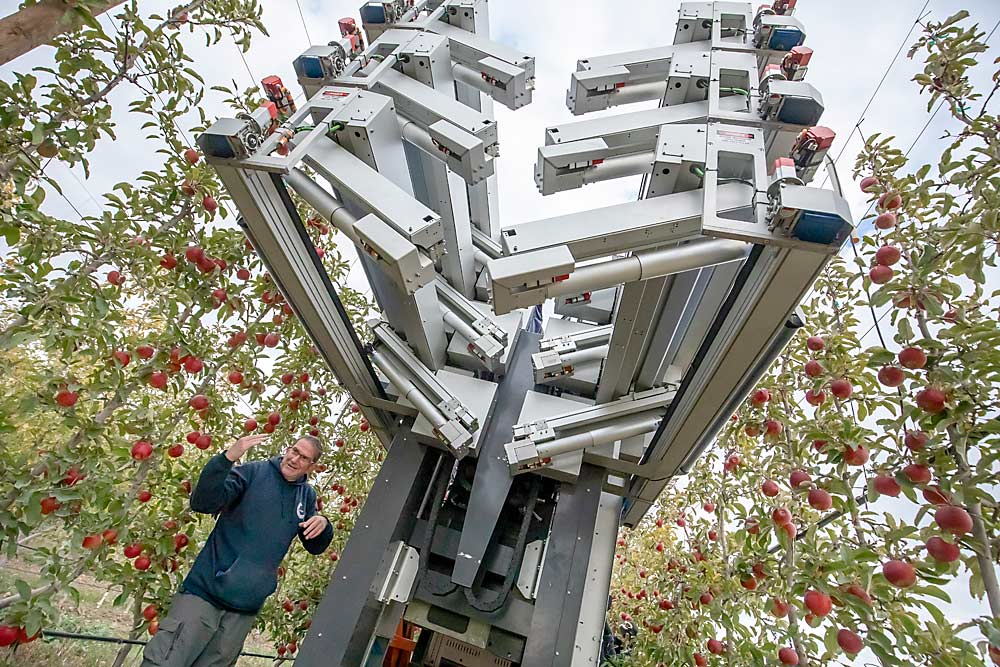
Still, he said the machine has “made a dramatic improvement this year” in terms of picking pace, preventing damage to the branches and trellis, more robust components and the ability to accommodate up to a meter’s variation in row width, Kahani said. The arms can now perform two different picking motions, a twist and a pull, and the company is figuring out which works best for each apple variety.
The company has received support from the Washington Tree Fruit Research Commission, partnered with Automated Ag for the self-leveling platform and with MAF Roda for the bin-filling technology, and collaborated with scientists at Washington State University on plans to eventually use the machine to prune and thin as well.
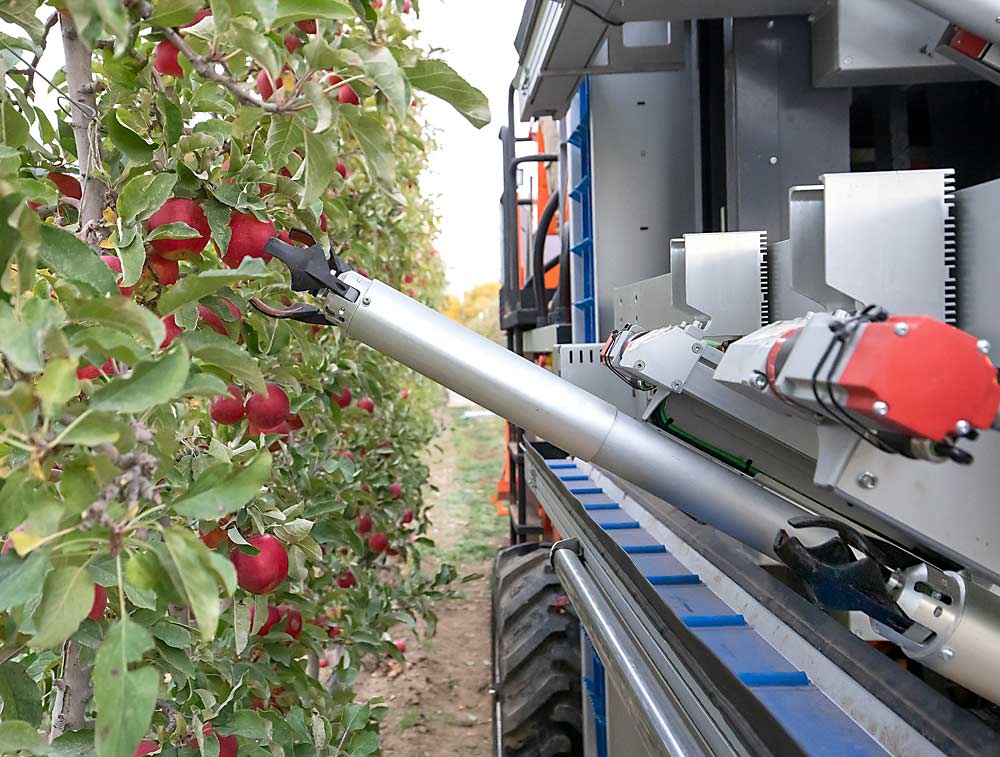
He considers the mechanical side of the technology pretty much done, but the company continues to improve the algorithms to make it more efficient and careful. With the artificial intelligence approach, as the machine identifies and picks fruit, it learns what works and what doesn’t, Kahani said.
Good Fruit Grower watched the harvester work in a Kanzi (Nicoter) block in Ephrata, Washington, owned by Columbia Fruit Packers. It doesn’t move continuously, but rather sets up its position to pick three to four trees on each side, which takes just a few minutes, and then moves on to the next section.
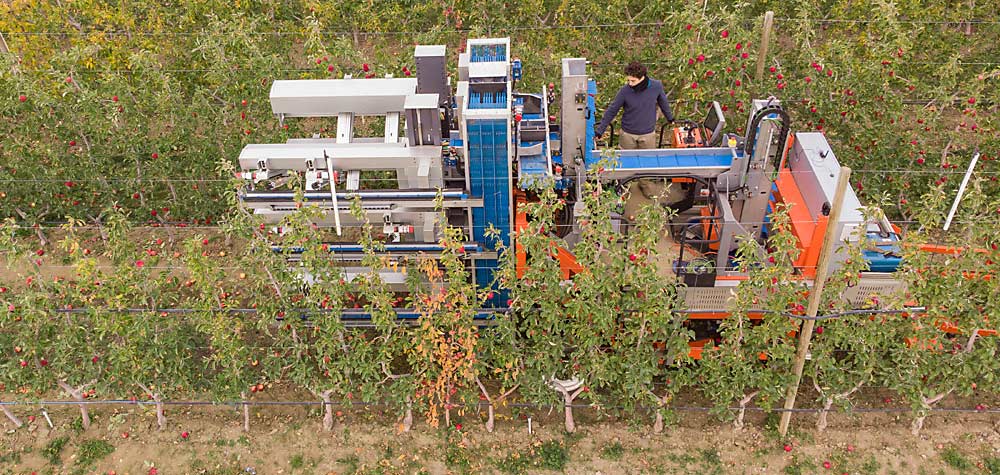
Despite the parts issues and delays, the technology seems to be “getting closer and closer all the time,” said Tim Welsh, the general manager of Columbia Orchard Management.
The Kanzi block where the robot picked this season is not planar, he said, but it’s relatively well set up for mechanized harvest. There will always be occlusion issues with trunks and wires blocking the machine’s access to fruit, but “on the positive side, it seems to be working around most of that,” Welsh said.
The harvester picked about 80 percent of the fruit on the trees, Kahani said, leaving fruit that’s too small, too green or blocked behind a branch or wire. It’s never going to be able to pick 100 percent.
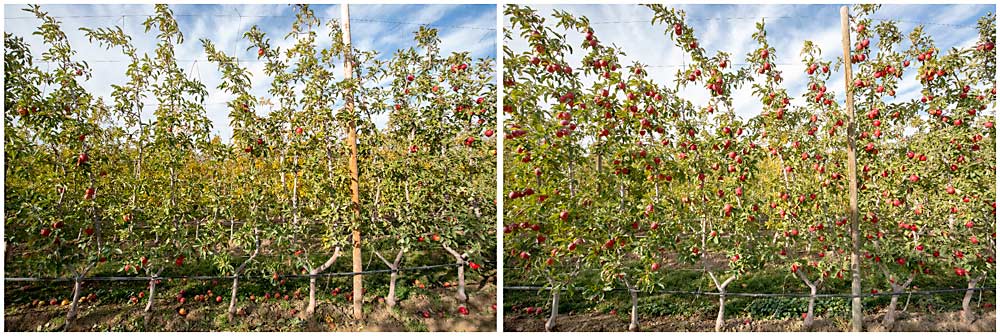
“We are not in a factory. We can improve but we can’t solve the whole problem,” he said. “The machine knows where the wires and branches are and tries to find the best way to pick. It won’t try to pick if it’s too risky.”
One challenge the machine continues to face is picking the spurs with the fruit, Welsh said. Of course, it’s going to happen occasionally, but he hopes to see the company continue to refine its algorithms to further reduce the incidence.
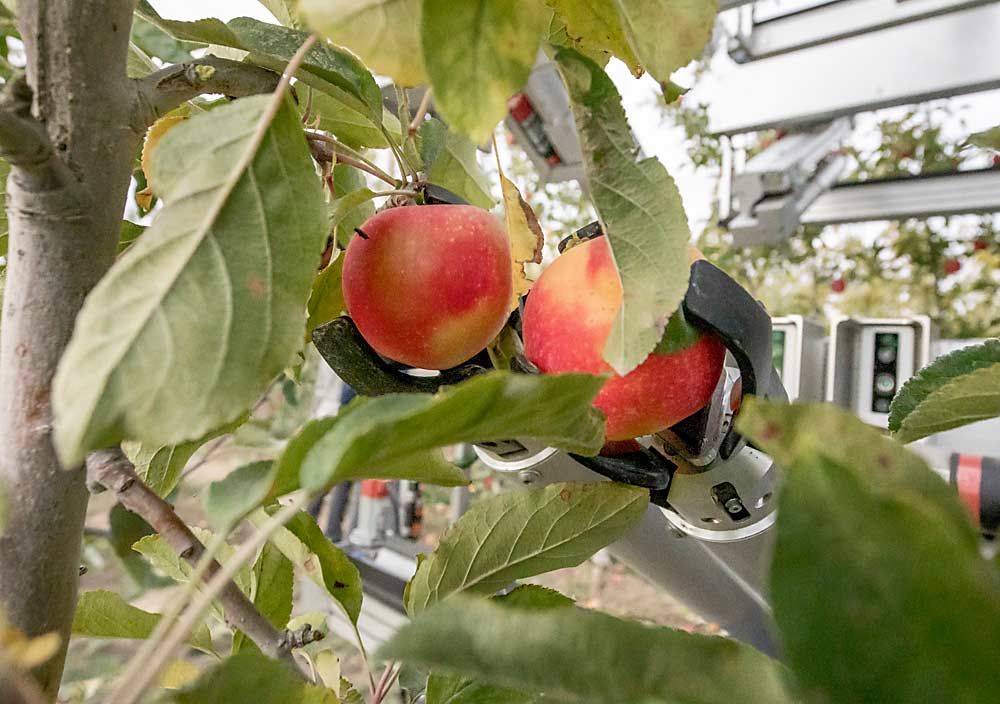
As for fruit quality, the technical difficulties meant the robot wasn’t able to pick a large enough lot of fruit to run through the packing line and get quality data, Welsh said.
With the generator temporarily blocking the bin delivery system, they didn’t get bin-per-hour data, either, but Kahani said he expects the machine to pick a few bins per hour, 24 hours a day.
“We need to get to a point where it’s (economically) worthwhile to pick with the machine,” he said.
Another change is the business model. Kahani had previously planned to sell the machines to growers, but now he intends to adopt a service model (see “Business and ’bots” ) with customers paying a per-bin rate for harvest.
For the 2022 harvest, the company hopes to do a limited-scale commercial harvest for a few customers with a limited number of machines (they had two at press time, one in Israel) picking hundreds of bins, gathering fruit quality data and further understanding the economics of operating the technology.
Looking further ahead, Kahani wants to figure out how to add value for growers by leveraging the data the machine already collects. The tree-by-tree images show crop load, of course, but also where a different pruning approach could prevent occlusions and make harvest more efficient in years to come. Eventually, he hopes the fruit grippers on each arm could be swapped with pruning or blossom thinning tools, so the machine can offer year-round value.
“If you can prune correctly and thin correctly,” that will set up the harvest for greater success, he said.
—by Kate Prengaman

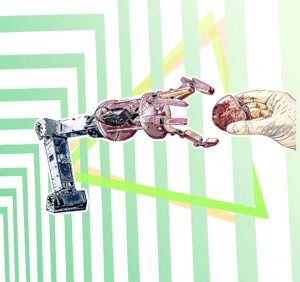





Leave A Comment